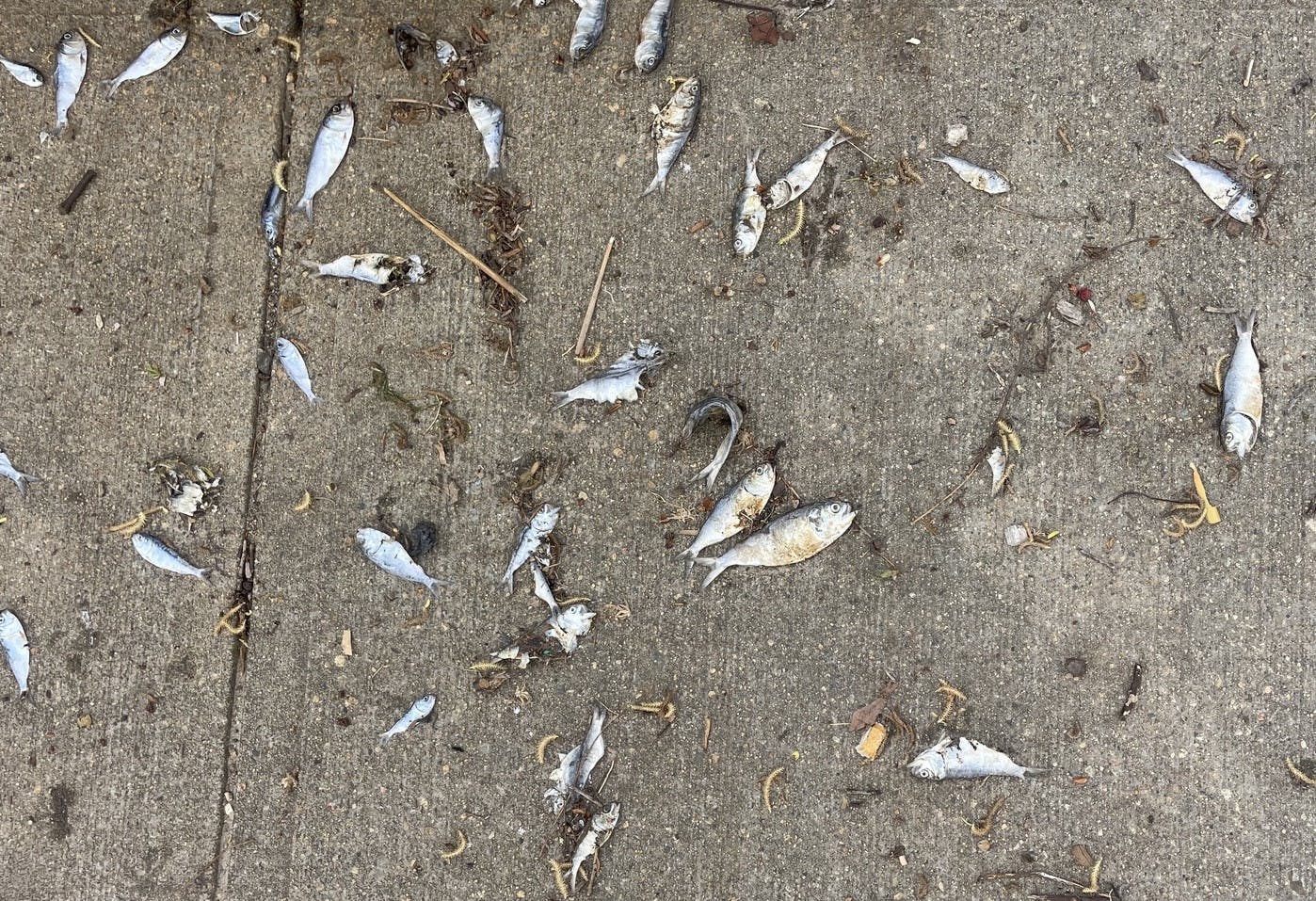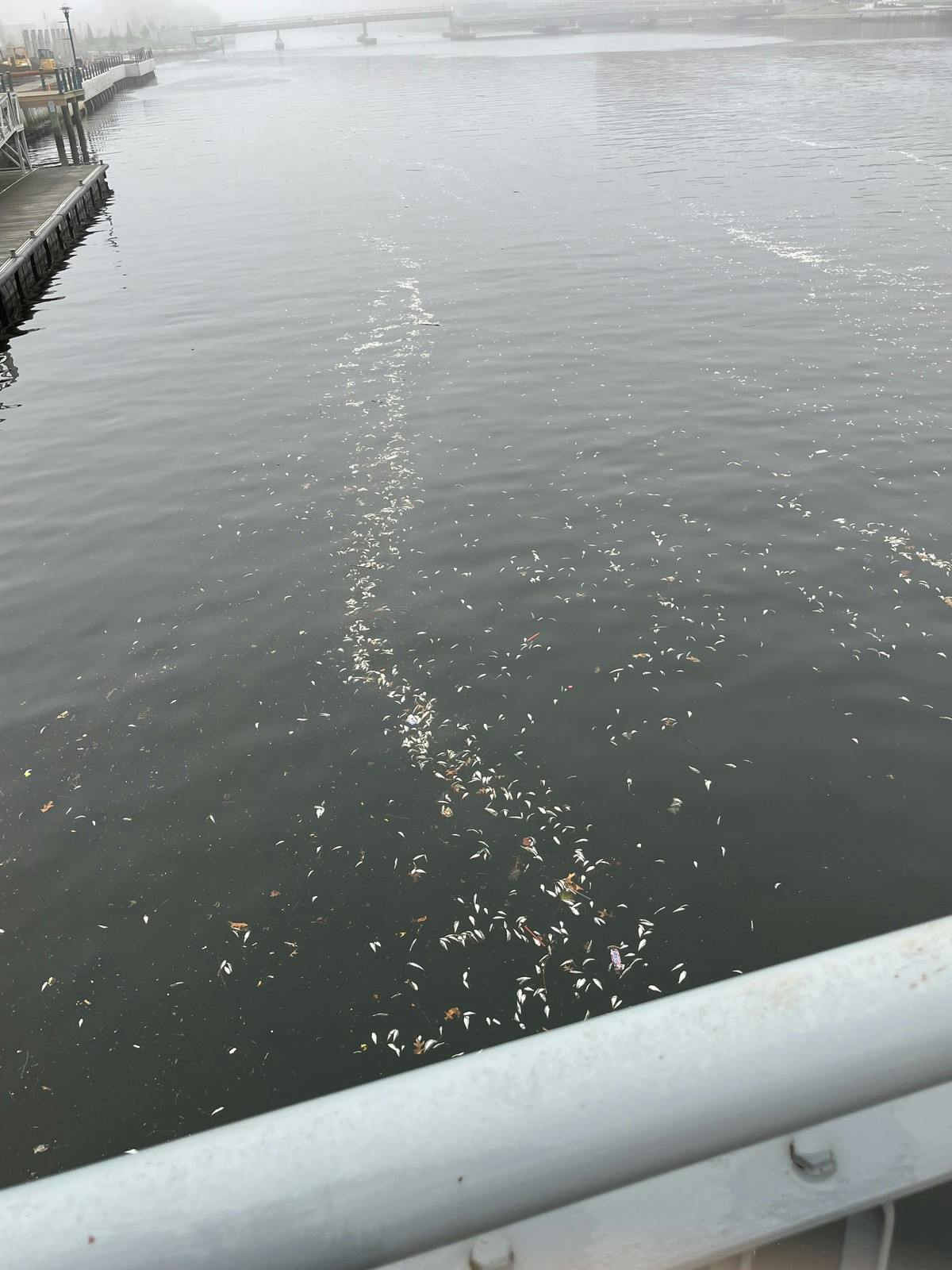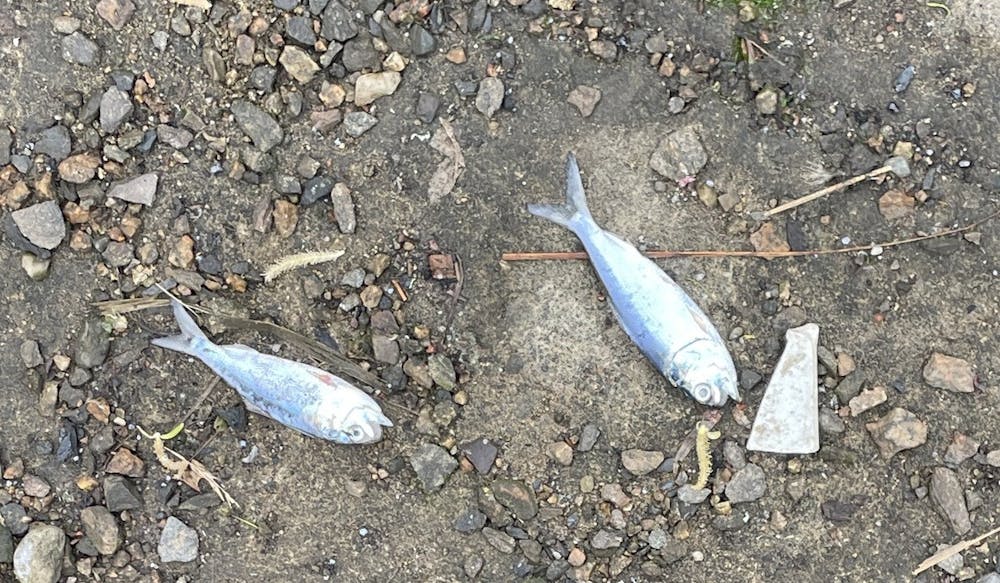On April 14, the Rhode Island Department of Environmental Management addressed concerns from community members regarding multiple reports of fish kills in the Providence and Seekonk rivers on their Instagram. According to the department’s post, the sudden influx of fish corpses in the rivers and on nearby sidewalks can be attributed to “school-induced hypoxia,” a natural phenomenon in which the dynamics and structure of schools of fish influence the oxygen concentration in their environment.
“Staff have observed that there are many more live fish nearby than dead, indicating that the mortality rate is very low and not a concern,” the post continued. Birds predating on the fish as well as the river washing corpses ashore led to high volumes of Atlantic menhaden scattered around Downtown and even some parts of College Hill and Fox Point.
RIDEM’s post explained the natural mortality event as the result of the fish clustering in areas of the Providence and Seekonk rivers with high levels of dissolved oxygen — a regular occurrence this time of year. This can lead to fish kills as “hundreds of thousands of fish in a small, localized section of shallow water” deplete the dissolved oxygen in “the immediate vicinity.”
The affected species have all been identified as Atlantic menhaden, a species RIDEM noted as being especially sensitive to anoxic waters. According to the RIDEM post, these fish are not uncommon for Rhode Island, but it is unusual for them to remain in the state’s inshore waters year-round like they have this year. Menhaden are a migrating species that typically relocate offshore when the season changes.
Michael Healey, chief public affairs officer for RIDEM, told The Herald that it is unclear why the Menhaden fish have remained inshore all year.

Generally, fish cluster in spots with high levels of dissolved oxygen as a result of low levels elsewhere — caused by “nutrient pollution and the creation of dead (anoxic) zones,” wrote Stephen Porder, associate provost for sustainability and professor of ecology, evolution and organismal biology and environment and society at the University, in an email to The Herald.
“Generally, fish kills in the bay and rivers are not uncommon as a result of nutrient pollution,” he wrote. “The basics are this: nutrients flowing into the bay cause a bloom in algae or other photosynthetic organisms. When they die and decompose, that process consumes oxygen,” Porder explained. “If temperature and water circulation conditions conspire,” the water turns anoxic.
It is unclear what specifically caused the fish to cluster in one area and stay inshore longer than usual.
“The dynamics of schools of fish traveling from one place to another are incredibly complex,” Healey wrote in a message to The Herald. “Possibly, they stayed because food was abundant, or at least abundant enough, that they didn’t sense that they needed to move.”
According to Jonathan Knowles, lifelong Providence resident and professor of architecture at the Rhode Island School of Design, the fish kills have “happened in years past, but a lot worse than it is today.”
“You used to see them all the way up,” Knowles said, standing by the Providence River on Water Street, pointing along the path where the rocks meet the sidewalk. “Now, they’re just kind of down there,” he said, gesturing to the ramp leading off-trail to the river bed.
Ben Roland, a senior at RISD who was working with Knowles by the river, said that in the four years he has lived in Providence, he has “never seen anything like it.”
Knowles noted that recent efforts have aimed to filter stormwater in the Providence and Seekonk rivers.
“It’s pretty cool … it filters (water) before it’s dumped into the bay and that’s why our bay is now clear,” he said. With better filtration, Knowles is “surprised that (the fish kills) are even happening anymore.”
“The last ten years have changed,” he said. “I haven’t seen this in five years.”

Courtesy of Patrick Farrell
Roland told The Herald that he posted on social media last week after noticing “all of these little silver things floating in the water” — they turned out to be Menhaden fish. “Walking by the canal, by the river, you see all of these things in the water and it’s like ‘what’s going on?’” he said.
Patrick Farrell, a third-year student at RISD said he has “been noticing the smell (of fish) for about a week now.”
“It seems particularly strong in Fox Point closer to the water,” he said. “I actually saw a ton of dead fish last week when I was crossing the Point Street bridge.” Farrell added that he could smell the stench of dead fish on his recent runs through Blackstone Park, noting that “the smell is also pretty noticeable near the riverwalk around RISD.”
“I have never noticed anything like this before honestly,” he said, although he noted that he did not visit Fox Point “that much before moving off campus.”
Farrell added that while he knows very little about the fish kills or why they happened, “it would be nice if it stopped smelling soon.”
Correction: A previous version of this story misattributed one photograph that was courtesy of Patrick Farrell. The Herald regrets the error.

Sofia Barnett is a University News editor overseeing the faculty and higher education beat. She is a junior from Texas studying history and English nonfiction and enjoys freelancing in her free time.





